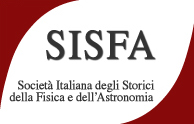Speaker
Description
The launch of the first Russian satellite and the advent of the space age did not catch a stellar scientist like Bruno Rossi unprepared. Through a long experience in the study of cosmic rays, and especially during the 1950s, he had acquired a sense of outer space as a space populated by high-energy particles, radiation, and magnetic fields that now could be studied in their primary form, beyond the Earth's atmosphere. I will show the significant aspects which, during this articulated path, have contributed to the evolution of his multifaceted scientific personality, ensuring that, at the moment of the creation of NASA in early 1958, Rossi was already fully aware of what the potential deriving from the new cosmic dimension could be and, notably, of which should be the scientific goals to be achieved in the immediate future. In record time, he championed the well-known projects that gave rise to scientific space enterprises that led to the launch of the satellite that first detected cosmic gamma rays, to the construction of a probe that systematically explored the space plasma and provided the first concrete clues of the existence of the solar wind, and to the launch of the rocket that discovered the first extrasolar source of X-rays, Scorpius X-1, and inaugurated the great season of X-ray astronomy.

